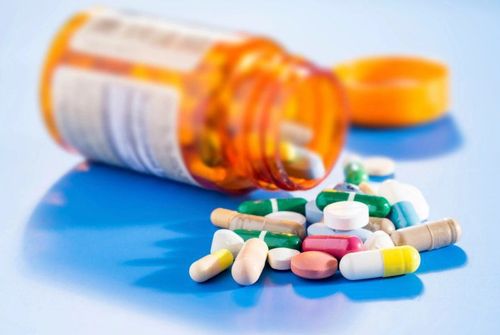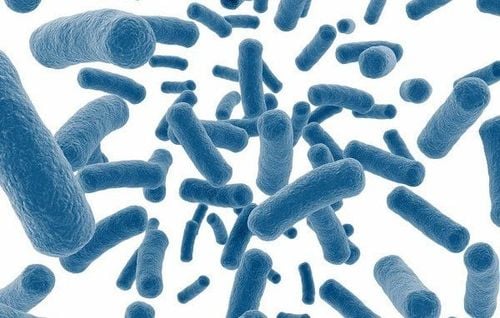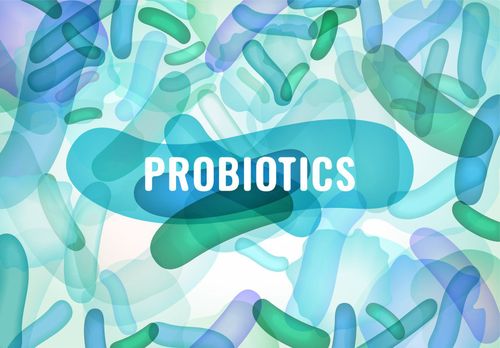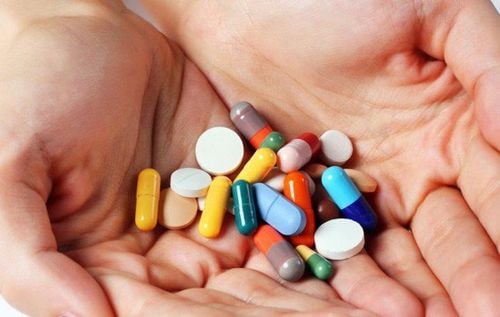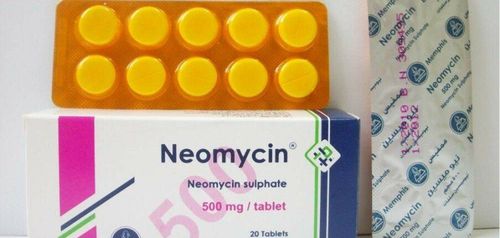This is an automatically translated article.
The first antibiotic to be published was Penicillin in 1929, since then there have been many antibiotics discovered from fungi and actinomycetes to more advanced antibiotics made by attached bacteria. chemically or purely chemically. Antibiotics are drugs that have played a very important role in the history of treating bacterial diseases, but not everyone knows the special things about the relationship between antibiotics and bacteria.
1. What are antibiotics?
Antibiotics are substances extracted from microorganisms or products of chemical synthesis that have the effect of inhibiting or killing microorganisms, can be used locally or systemic, with little or no toxicity to the body. In the treatment, when the results of antibiogram are not available, the physician can give empiric antibiotic treatment based on the following classification:
Antibiotics acting on Gram-positive bacteria: penicillin, erythromycin Active antibiotics against Gram-negative bacteria: chloramphenicol, gentamycin Broad-spectrum resistance used for many types of bacteria, including second- and third-generation cephalosporins, quinolones, imipenem Narrow-spectrum antibiotics specific to some bacteria such as Gram-positive cocci. taking oxacillin, cephalosporin I, vancomycin), anti-tuberculosis antibiotics (rifampicin, isoniazid, streptomycin), antifungal antibiotics (nystatin, gruseofulvin, ketoconazole, fluconazole)
2. Classification of antibiotics by chemical structure
This is the most scientific classification that allows antibiotic prescribers to use alternative groups or combinations of antibiotics to avoid drug interactions. There are 8 main groups of antibiotics:β-lactam: is a group of antibiotics with low toxicity and broad spectrum of action, including 2 subgroups, penicillin and cephalosporin, including 4 generations. The note of this group is that because of its broad spectrum of action, prolonged use of high-dose antibiotics makes it easy for patients to develop intestinal dysbiosis, especially penicillin G and V, which have a higher rate of allergic reactions than other antibiotics. aminoside: There are typical antibiotics such as streptomycin, kanamycin, neomycin that have strong bactericidal effect on many types of Gram-negative bacteria and some Gram-positive bacteria. Note that when using high doses for more than 10 days, it can cause damage to the vestibule, auditory nerve and kidney in patients. Contraindicated for pregnant women and limited to children under 7 years old Phenicol group: Typically, chloramphenicol and thiamphenicol have inhibitory effects on Gram-negative bacteria. Note that when taking high doses for many days can cause bone marrow depression and irreversible anemia. Contraindicated for pregnant and lactating women, children under 3 years old and patients with anemia, liver failure. Lincosamide group: Typically, Lincomycin and clindamycin are active against Gram-positive and anaerobic bacteria. Note that prolonged use can cause bleeding colitis. Macrolide group: the classic class includes erythromycin and oleandomycin only inhibiting Gram-positive bacteria. New types include roxithromycin, clarithromycin, azithromycin,... are effective against many types of bacteria both Gram-negative and positive as well as especially good against intracellular parasites. The cylin group: typically tetracylin, doxyxylin, minocyline, have inhibitory effects on many different types of bacteria, including intracellular parasites. Note that this group of antibiotics is easy to damage the liver, periosteum and tooth enamel, so it is contraindicated for children under 9 years old. Antifungal group of antibiotics: typically nystatin and griseofulvin, with broad spectrum, good absorption, can be used both locally and systemically and not for pregnant and lactating women. Other groups: include 2nd generation quinolones, nitro-imidazoles, sulphonamides and glycopeptides.
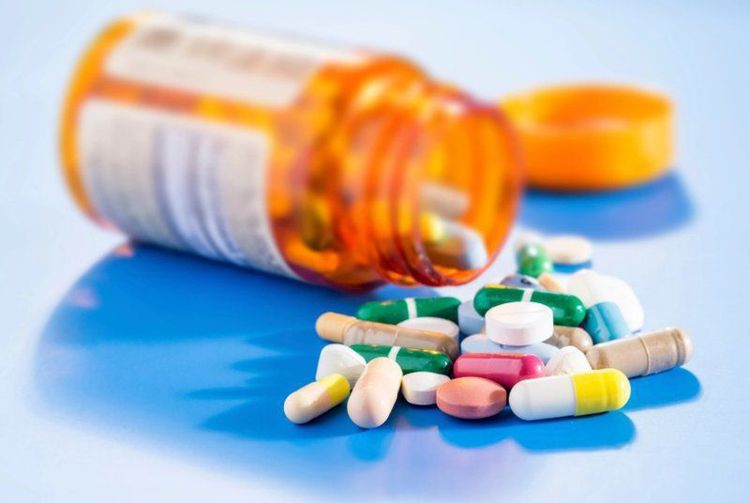
Thuốc kháng sinh có tác dụng tiêu diệt vi khuẩn hiệu quả
3. Mechanisms of action of antibiotics against bacteria
There are 5 mechanisms of action of antibiotics with bacteria that inhibit or kill bacteria including:
Inhibition of cell wall synthesis: β-lactam antibiotics have the ability to selectively bind to The transpeptidase of the bacterial cell wall causes the cell wall made of peptidoglycan to disintegrate, killing the bacteria. Inhibition of cytoplasmic membrane function: antibiotics attached to the plasma membrane will selectively change permeability, causing bacteria to lose some essential substances, damaging and killing bacteria. The typical group of antibiotics that act by this mechanism are polymycins and aminosides. Inhibition of protein synthesis: There are two mechanisms: blocking the polypeptide chain or rendering the abnormal protein useless. Phenicol and macrolide are able to attach to the 50s part of the bacterial ribosome, blocking the transferase enzyme, stopping bacterial protein synthesis. Tetracyllin and aminosides are able to bind to the 30S part of the bacterial ribosome, causing a misreading of the bacterial RNA, rendering the protein produced useless for bacterial life. Directly acting on nuclear acids: quinolones have the ability to inhibit the enzyme DNA-gyrase, making bacterial double-stranded DNA unable to stretch, causing the bacterial DNA synthesis to be completely stopped. Antagonistic competitive effect: is the mechanism of sulfunamides with similar chemical structure to paraaminobenzoic acid, so it competes with PAB that bacteria need to use, leading to the cessation of nucleic acid synthesis of bacteria.
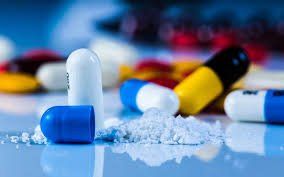
Mọi người cần nắm rõ các cơ chế tác dụng của kháng sinh với vi khuẩn để sử dụng thuốc phù hợp
4. Five principles of safe antibiotic use
With outstanding use in the use of antibiotics against bacterial infections, understanding how to use antibiotics is necessary for all subjects. Here are 5 principles of safe antibiotic use:
Using the wrong antibiotic will reduce the effectiveness of the drug: antibiotics only work to kill or inhibit the growth of bacteria, but not It affects all types of microorganisms, so if antibiotics are not used correctly, the bacteria will learn to resist the antibiotic, making them ineffective. Antibiotics are not used to treat viral diseases. Using the right antibiotic, at the right dose, in the right route and at the right time: these are the criteria that need to be taken into account when using antibiotics to achieve good results in treatment and prevention of drug resistance. Do not share antibiotics with family or friends: do not take antibiotics prescribed for others because each prescription is only appropriate for a certain case, using the wrong medicine, wrong dose can delay the treatment and promotion of drug-resistant bacteria. Only use antibiotics when prescribed by a doctor: this will help limit the improper use of antibiotics, increasing the risk of antibiotic-resistant bacteria as well as ineffective treatment. To register for examination and treatment at Vinmec International General Hospital, you can contact Vinmec Health System nationwide, or register online HERE
MORE:
Benefits and harms of Bacteria What is bacteria? What types are there? 5 principles of safe antibiotic use.




